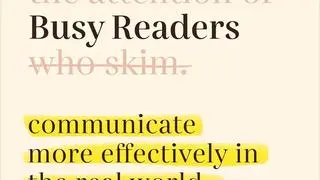Around the late Eighties, as a Field Officer in a rural branch, I remember telling customers who approached for loans for building houses that commercial banks are unfortunately not in the business of home loans, as they are supposed to lend only for “productive purposes”. That was the “received wisdom”of Indian banking those days. So, even though the demand was genuine, banks did not give loans for house construction. And there was no regulatory push. Small-scale industries, small business finance and agriculture were seen as “productive” and eligible for bank finance.
The reforms of 1991, politically backed by Prime Minister Narasimha Rao, and astutely executed by the then Finance Minister, Dr. Manmohan Singh, turned the tide and now home loans constitute the biggest segment of loans for most major banks, including the country’s largest lender, SBI. Real estate players estimate that the construction of a house or building of an apartment leads to demands on 250-odd manufacturers, including cement, steel, sand, paint, switches, electrical wires and so on. It is a thriving sector, where commercial banks are very active.
Over the last 75 years, Indian banking has undergone such major shifts and changes. Some, like the first move of nationalisation in 1969, the licensing of new private sector banks post-1991, the setting up of payment banks and small finance banks, and the consolidation and merger of public sector banks in the last decade were major milestones. Other reforms including the adoption of the 90-day norm for NPA classification and income recognition in the ’90s, the Asset Quality Review initiated by the RBI in 2015-16, and the new prudential framework for resolution of stressed assets and the drive for ‘Financial Inclusion’ under the Prime Minister’s Jan DhanYojana scheme impacted our banking with positive spin-offs.
Precursor to Indian banks
Dr Ashutosh Raravikar, Director in the DEPR of RBI, attempts to capture developments in the Indian banking sector over the last 75 years in a slim volume titled “Indian Banking in Retrospect”. It is a running commentary on the evolution of our banking system not only over the last 75 years, but even before the country gained Independence. The setting up of the three Presidency Banks, which were the forerunners to the present-day State Bank of India, the first Indian joint-stock bank, The Allahabad Bank, established in 1865 (since merged with Indian Bank) and the mutual-aid or cooperative banking, which sprung up at the start of the 20th century, all find a mention in his narrative.
Along with the growth of the country, Indian banking has played a major role in inter-mediating between savers and borrowers to channelise money where it is required, though priorities have altered during these 75 years.
The first all-India Rural Credit Survey, for instance, which, in fact, gave a thrust to rural credit penetration, was intended to study “all strata of the rural population and cover problems of capital formation in the rural areas, as well as the credit requirements of both economic and indigent farmers”. This survey was conducted at a time when loans from the formal banking system to agriculture constituted just 2-3 per cent, when the contribution of that sector to national income was about 45 per cent. Now, these loans stand at around 18 per cent of net bank credit.
Similarly, the average savings rate of the country was at 10 per cent in 1951. Now we have a savings rate of 30 per cent, one of the highest in the world and perhaps, next only to China among the major economies.
The pre-emption through the Statutory Liquidity Ratio and Cash Reserve Ratio was as high as 63.5 per cent (before 1991) whereas the total per-emption from deposits mobilised by banks is only 22.5 per cent. In the wake of the adoption of the 90-day norm for NPA classification, the banking system reported NPAs of 23.2 per cent at end-March 1993, notes Dr Raravikar in this compendium. The NPA turmoil is past its peak now.
Tough as they come
Overall, the Indian banking system, like our nation, has displayed great resilience and stood the test of time. Whether it was the South-East Asian crisis of the late ’90s, the global meltdown of 2008, the taper-tantrums of 2013-14 (when the West withdrew liquidity causing some instability in the international order) or the post-Covid economic slowdown, policy makers, the central bank and the people who operate commercial banks have together measured up to challenges.
Indian Banking in Retrospect traces the developments in our banking sector all through these years, briefly and concisely. The book, all of about 75 pages and priced at a modest Rs 99, gives a snapshot. But, just that. Those who are looking for comprehensive narratives will have to look elsewhere.
However, the author throws in his insights even as he gives a factual account. He sums up aptly towards the end, “reforms in the system and governance were inevitable for the consistent performance of the banks… Autonomy in governance and managerial matters would be beneficial. Autonomy in the matters of human-relations related aspects would also be helpful to bring about a competitive incentive structure, as also flexibility in labour or personnel hiring practices”.
(S.Adikesavan is a commentator on banking and finance)
Review: INDIAN BANKING IN RETROSPECT - 75 Years of Independence
Dr Ashutosh Raravikar
Aswad Prakashan Pvt. Ltd.
Price: Rs 99 Pages: 80
Click here to check out the book on Amazon








Comments
Comments have to be in English, and in full sentences. They cannot be abusive or personal. Please abide by our community guidelines for posting your comments.
We have migrated to a new commenting platform. If you are already a registered user of TheHindu Businessline and logged in, you may continue to engage with our articles. If you do not have an account please register and login to post comments. Users can access their older comments by logging into their accounts on Vuukle.